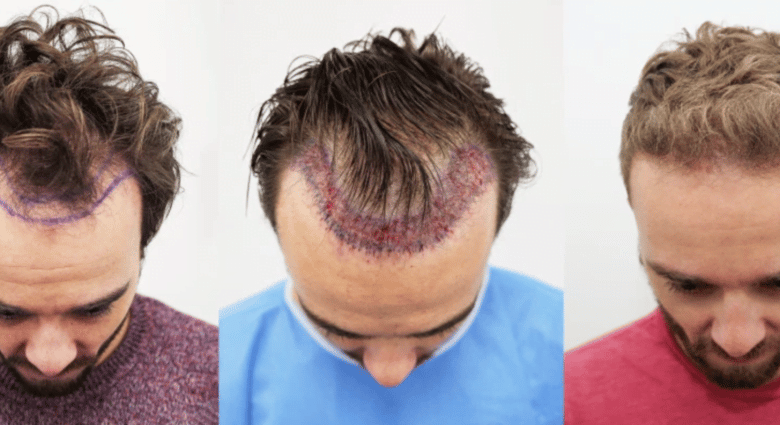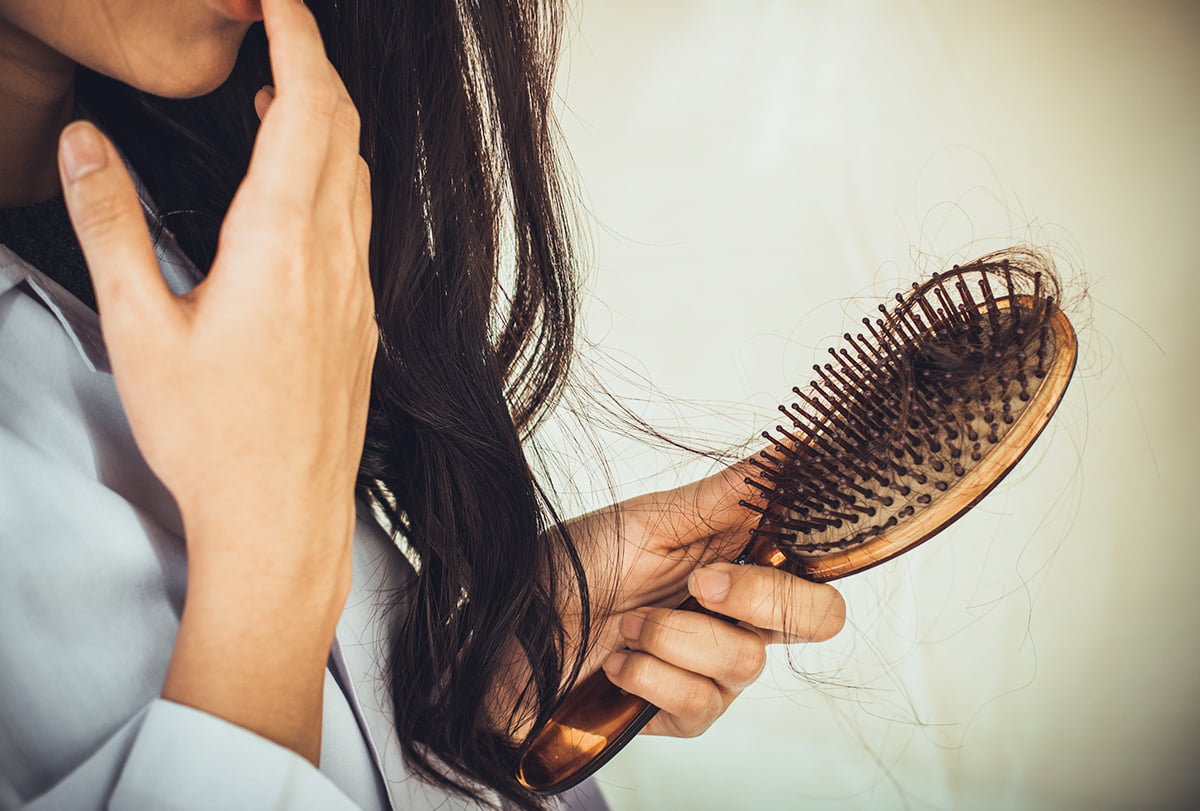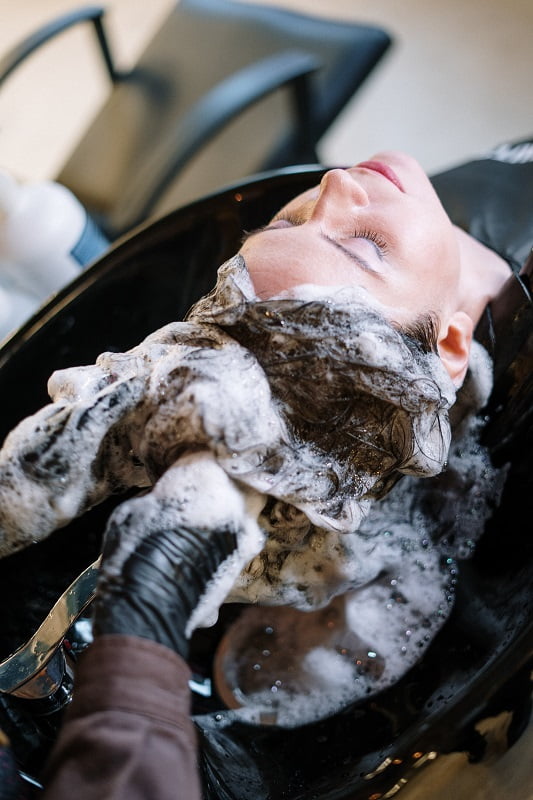best Hair Transplant Methods

best Hair Transplant Methods
When dealing with the issue of losing hair, in some cases, individuals choose to use hair transplants as a treatment.
A hair transplant basically means to take hair from one area of the head with hair and root it into another area of the head without hair.
Then, the hair roots itself and begins to grow. In order to accomplish this task, there are different hair transplant methods to use. Below are the hair transplant methods and the details surrounding them.
First, one of the hair transplant methods is called the strip method, of the Follicular Unit Transplant. This method is generally the most popular type of hair transplant, partly due to the fact that it is usually the least expensive method.
How this particular method works is a piece of skin is removed from the donor area of the head (the area that has hair). Then, the donor area is sutured closed.
After this, the strip is divided into follicular units, which are individual hair groupings. In the bald area, hundreds to thousands of small slits are cut and the individual hair groupings are placed in them.
Where the hair was implanted, there is a short-term rash. After a short period of time, the sutures are removed and the scalp is examined. Within about three to four months, the hair transplants should begin growing.
This hair transplant method is usually fully done after a year, when the individuals may have normal hair cuts and be able to stop using vitamin supplements, volumizing shampoos, and other such hair loss products.
Second, another one of the hair transplant methods is Follicular Unit Extraction. In this particular method, tiny puncture holes are placed in the donor area of the scalp. From this holes, the follicular units are extracted.
Although this method causes scarring, there is not as visible of a scar as from the strip method. After extracting the follicular units from the holes in the donor area of the scalp,
the units are then placed into the small slits in the bald area of the head. Eventually, after a few months, hair will begin to grow from the transplants.
Also, within a year this method should be complete, as with the previously mentioned method of hair transplant.
Although hair transplant methods may take time to grow hair and may cause scarring, the overall effect will eventually be a full head of hair.
Instead of worrying about bald spots, individuals will have their natural hair growing. Depending on what type of hair transplant methods are chosen by these individuals, the scarring will be different.
With the Follicular Unit Transplant method, the persons undergoing this treatment will have a suture scar on the back of their head, or donor spot.
For those persons choosing the Follicular Unit Extraction method, they will have multiple small scars over the back of their head, or donor area.
Hair transplant methods usually vary in the way that hair is extracted. However, the outcome of the transplant – growing hair – is the same.
Is Hair Transplant Painful?
Many people who think about having hair transplant surgery wonder if the procedure is painful. Often people have sensitive scalps and the thought of someone making cuts there seems hard to think about for these people. There is disagreement as to whether hair transplant surgery is painful, though.
Some say that hair transplant surgery is similar to a visit to the dentist. This does not seem like a description of something that is pain-free. It certainly does not seem like a relaxing experience. Yet some feel that there is that degree of pain involved.
The injections of the local anesthetic into the scalp before hair transplant procedures are definitely painful to some degree.
Anyone who has had a tooth pulled knows that, if the tooth is deadened properly, it is not the tooth-pulling that hurts. It is the needle going in with medication to numb the tooth that is the real agony.
Of course, to follow the dental analogy, after the numbing wears off there is plenty of pain where the tooth was before. With hair transplant surgery, there is pain after the surgery as well.
Swelling is normal after hair transplant surgery and can even keep you away from work. Your skull may feel very unusual for weeks.
However, the pain of hair transplant cannot actually be compared to a tooth extraction. Hair transplant pain is decidedly less sharp and some do not even feel it as pain at all.
Many people simply feel it as an uncomfortable feeling. If they do feel any pain, it is of a degree that can be taken care of with a few doses of Tylenol.
On the other hand, some people who have had hair transplant procedures done do not feel that there is any pain involved at all. They tolerate the injections of the local anesthetic well.
They are not bothered at all by the procedure. In fact they often watch television or read magazines, being awake and alert the whole time.
Hair transplant surgery is surely less painful than it was in earlier times when larger sections of scalp were excised. This involved more cutting to take out the donor hair and more cutting to insert the donor hair into the recipient site.
Hair transplant surgery was a very painful procedure in the past. Not all doctors today have given up on older methods. This is one reason why you should ask a lot of questions when you look for a hair transplant surgeon.
Up-to-date techniques for hair transplant use only the follicular unit and not a large amount of surrounding tissue for the donor grafts.
This cuts down considerably on the amount of pain experienced. The procedure is minimally invasive now, so that no more of the scalp is disturbed than is necessary.
Finally, having a hair transplant with an experienced and skilled surgeon is an important key to having a less painful surgery.
A doctor who knows the best way to do the procedure will cause you less pain an produce a better result for you into the bargain.
Follicular grouping the innovative hair transplant technique
Experiments performed by the hair transplant surgeon Dr Seager in 1996 gave significant credence to the surgical technique of unit follicular hair transplant.
Since these experiments had demonstrated that the survival rate of intact follicular unit was better than the single hair micro-grafts, the use of micro-grafts for hair transplant surgery was more or less dropped.
Although the results of surgical hair restoration with the use of follicular unit transplants were sound and aesthetically pleasing,
this form of hair transplant surgery suffered from drawback of requiring a long time period (6-8 hr) to complete a transplant session.
It involved teams of highly skilled assistants for the hair transplant procedure of separating the follicular units. As the procedure required long time and much skill the procedure was proving to be very costly to the patient.
The surgical damage caused to the follicle when two follicular units extremely close together were dissected apart, also started to affect the results of Hair Restoration Surgery.
A reduced success in follicular unit transplantation was more frequent in hair restoration surgeries that were being performed by hair transplant surgeons undertaking follicular unit transplant surgery only infrequently.
The fact was of much concern to the professional hair transplant surgeon. The primary reason for a reduced success rate was that the assistants of the
hair transplantation surgeon lacked the expertise and experience in correctly isolating single follicular units and dissecting them at a fast pace.
Ensuring that the follicular unit remains intact and is dissected and implanted into the scalp in the shortest possible is essential for increasing the chances of the hair follicles surviving the process and growing.
But whenever an assistant was not able to take care of this important aspect, it affected the results.
For the above mentioned reasons, a technique that leaves the follicular unit intact but at the same time advocates the use of
three and four-haired follicular groupings for surgical hair restoration was evolved by the innovative hair transplant surgeons. This procedure was found to have many advantages over follicular unit transplantation.
A single hair follicular unit does not necessarily comprise a single hair and may contain 2-4 hairs in a single hole.
When the follicular units are found very close to each other in the donor skin sample it is not advisable to separate them as it can cause iatrogenic damage to them.
Advantage of this fact is taken to form three-and four-haired groupings when 2 two-haired follicular units or a three haired unit and one-haired unit are naturally placed very close to each other.
A group (of 1-4 follicular units naturally placed close to each other) transplanted as a single graft results in superior hair growth and at the same time lessens the surgical damage and trauma to the recipient site.
The hair transplant procedure of using natural groups for the hair transplant surgery has many advantages:
1. It results in much quicker hair transplant procedure as it saves time for separating each follicular unit and less time is required for their placement.
2. Hair transplant procedure prevents iatrogenic injury to follicular units during the dissection phase.
3. It lessens iatrogenic injury during placement phase because follicular groupings are not as fragile as follicular units because of more tissue attached to them.
4. As this hair transplant procedure proceeds at a faster rate, it allows the grafts to be left out of the body for a shorter period of time and increases their survival rates.
5. The last but not the least important advantage of this hair transplant procedure is that it reduces the cost of hair transplant surgery and is there for affordable to the patient.
Besides the above mentioned advantages, the technique of grouping of hair follicles can serve as a crucial tool in an expert hair transplant surgeon’s hands to create wonders through the hair restoration surgery!
Success and a natural looking hair transplant requires strategic planning! The grouping technique does not undermine the importance of a unit follicular hair transplant but actually compliments it by conserving more single-haired follicular units for the defining the hairline.
The 2-haired follicular groups can be used for gradation in the area immediately posterior to the hair line and use of denser, but not bigger,
3 haired groups to provide the hair-density to the bald scalp behind. Besides saving the hair in the donor area for the future hair transplants this innovative technique of hair restoration surgery provides you the results which are just wondrous!
Have you found the above article interesting? You can get more hair transplant information to read on the topic by logging on to the website hairtransplantadvice.com.
Facts about Hair Transplant Procedures
It is getting more common for people to get hair transplant procedures as the methods keep improving. It is just less obvious than in earlier
times when everyone could spot a person with bad hair plugs. Yet, there are still a few facts about hair transplant surgery that are not widely known.
1. A large percentage of men have balding issues. In fact, 50% of American men that are 50 years old or older are dealing with some amount of hair loss.
Hair problems in today’s society beg to be conquered. Some do it by shaving their heads completely. Others take the exact opposite route and have hair transplant surgery.
Those who accept their baldness may have a healthy psyche, but they are slightly out of step with the rest of the world.
2. The procedure is permanent. If you decide you do not like the results, it is not as simple as taking off a wig to change your hair.
You would have to go through many surgeries and your head may never look the same. This is why you should never accept any doctor’s offer to do a few hair grafts and see how you like it before doing a full hair transplant surgery. Once you start, you are committed.
3. You need several days of rest afterward hair transplant surgery. Since the operation is so easy to endure, you might think that you can jump up and go right back to your regular activities.
It is just your scalp after all, not muscle or bone. The truth is that you have many small wounds and you need to protect them.
4. Hair transplant can be a time-consuming commitment. Treatment can often last one to two years. Mega-sessions where thousands of grafts are done in one sitting help to shorten the overall time. However, the length of these sessions is often grueling.
5. Hair transplant surgery may be combined with other procedures. If you do not have enough hair, you cannot have a normal hair transplant surgery.
However, there are other surgeries that can be used in conjunction with hair transplant to achieve similar results. The difference is that these procedures are generally more painful.
6. The grafts may not survive. Few surgeons will divulge to you the fact that hair grafts do not always survive after hair transplant surgery.
The hope is that only a few will be lost and the overall result will not suffer. The reality is that is what usually happens.
7. Hair transplant treatments do not cost as much as you think. For example, you might reasonably spend $12,000 on a hair transplant. If you got it done at age 30 and died at age 70, you would have the transplant 40 years.
That would average out to $300 per year, or $25 per month. Many of the supposedly low cost treatments for hair loss cost much more than $25 per month. You would actually save by getting the hair transplant surgery done in the first place.
Hair Cloning Research for Hair Transplant Procedures
The future of hair transplant procedures is in the laboratories at this very time. Scientists are working together to find a way to make the surgery work for more people.
They also want to see it work better for the types of people who have hair transplants today. One area of research is hair cloning.
Hair cloning promises to be a revolutionary procedure that would give people with little hair a chance to have hair transplant surgeries.
It would do this by multiplying the hair a patient already has rather than using up the good hair that still exists on the patient’s head.
Hair cloning is done by taking stem cells, or dermal papilla cell, and cloning them in a laboratory setting. They are then multiplied and combined. The end result is an increase in the number of hairs available for hair transplant.
Not only is hair cloning possible, it has been proven in many scientific studies. Recently one group of researchers did a culture whereby they multiplied the number of dermal papilla cells. With this being possible, hair cloning is a single step away.
Hair transplant procedures that use cloned hair are farther off, though. The research cannot be done as to whether these hairs can safely and effectively be transplanted onto a person’s scalp yet.
First, they cloning process will have to be completely perfected. Only then can the hair transplant trials begin.
More research needs to be done to find out which hair cells can be used for hair cloning and then hair transplant procedures.
Some of the available cells go through several stages before ending in cell death in a very short time. These cells would not be adequate for use with hair transplant surgery. There seem to be other cells which last longer and would work for this application.
A scientist named Dr. Gho has done some work and acquired a Dutch patent on his work with hair multiplication.
It is unclear whether this is much like hair cloning or not. That is because Dr. Gho neglects to submit his findings to be published in medical journals. Without review by other doctors, Gho’s theories cannot be tried and evaluated.
Certain types of auto-immune diseases, such as alopecia areata can now be treated by means of hair transplant techniques by using the donor strip method.
Yet, in the future, hair cloning will make hair transplant easier for these people who often have very little hair to use for grafts.
Some people believe that hair transplant grafts using cloned hair would be about the same cost as the usual hair transplants that are available today.
Other experts believe that the price will be much higher – perhaps three or four times per graft higher – because of the specialized methods required to do the work.
Hair cloning is probably not as far away as one might think. It might be ready for use with hair transplant procedures as soon as five years from now, or even sooner.
If you are considering getting a hair transplant but you want to wait awhile, hair cloning is something to think about.
best hair transplant method 2023,hair transplant,latest hair transplant technology 2023,neograft hair transplant,dhi hair transplant,does transplanted hair stay forever,fue hair transplant,stem cell therapy for hair growth,




